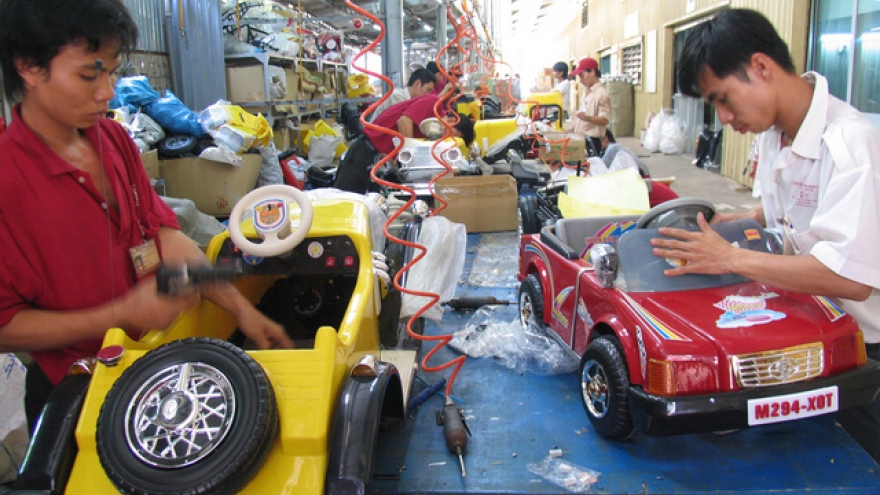Plastics manufacturers struggle to survive amid M&A boom
While more and more foreign giants are coming to Vietnam, domestic plastics companies are still fumbling for a way to control supply sources.
 |
In the plastic tube market segment, for example, Tien Phong Plastics holds 60% of northern market share and Binh Minh 50% of southern market share.
Acquiring Tien Phong’s or Binh Minh’s shares would allow foreign investors to easily set foot in the Vietnamese plastic tube market.
Nawaplastic Industries, a subsidiary of Siam Cement Group (SCG), has become the biggest shareholder of Binh Minh with 50.9% of shares.
Analysts say the deal helped SCG realize its ambitious plan of building up a value chain in Vietnam’s plastics industry. SCG also owns a plastic bead manufacturing company and holds a stake in several other companies, including Vietnam-Thailand Plastchem, TPC Vina, Chemtech and Minh Thai Company.
SCG’s president Kan Trakulhoon has said the group would pour more capital into Vietnam and take over domestic companies.
Japanese have also geared up with a plan to take over Vietnamese plastics companies to make products for export to Japan, which has become Vietnam’s biggest export market.
United, Goldsun and Dong A have fallen into Japanese hands.
Analysts say that investors from the Republic of Korea and China are also taking steps to penetrate the Vietnamese market.
Vietnam doesn’t set limits on the foreign ownership ratio in Vietnamese plastics companies, which means that foreigners can buy up to 100% of shares of the companies.
Foreign investors can see great potential there: the plastics consumption level is 41 kilograms per head per annum, which is still lower than the average level of 48 kilograms in Asia and 70 kilograms in the world.
According to BMI Research, Vietnam’s food sector would see 10.9% growth ate in 2015-2019, and the bottled drink sector 17-25%, which will give great opportunities for the plastics industry to develop.
However, though the market has great potential, Vietnamese enterprises have to struggle to exist. Their biggest problem is the heavy reliance on input material imports.
According to the HCM City Rubber & Plastics Association, Vietnam would need 5 million tons of materials by 2020. Meanwhile, 70-80% of materials are imports.
As a result, Vietnamese enterprises have to spend big money to store materials and do not have a lot of working capital. They also face risks from exchange rate fluctuations and world oil prices.

